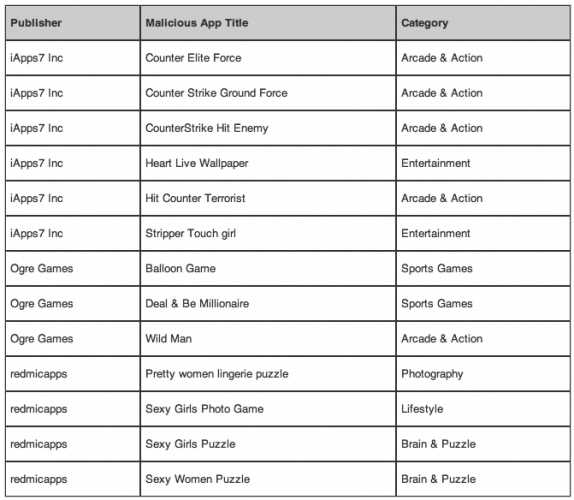

- Android marketplace ios for mac android#
- Android marketplace ios for mac Pc#
- Android marketplace ios for mac mac#
- Android marketplace ios for mac windows#
The rise of iOS and Android as humanity’s primary computing platforms has obliterated Windows’s decades-long hegemony.

Android marketplace ios for mac mac#
But if desktop Safari usage share is growing, it must mean Mac usage is growing. And that in turn leads to more desktop Safari users - even though recent switchers strike me as among the most likely Mac users to use Chrome, which they’re likely familiar with. We all kind of knew this was true from the Mac revenue numbers Apple reports each quarter, but Statcounter’s data backs up Apple’s claims that the Mac continues to gain new users. The Mac, on the other hand, is clearly seeing impressive market share growth.
Android marketplace ios for mac windows#
It doesn’t seem outlandish to project that Mac and iOS, combined, might soon surpass Windows and Android combined in Statcounter’s share numbers for the U.S. In the U.S., Windows is effectively neck-and-neck with iOS, each hovering around 30 percent for the last few years. The decline in Windows’s dominance has been precipitous: in 2009 Statcounter pegged its share at 95 percent today it’s 28 percent. Globally, Windows was surpassed by Android back in 2017. Which brings me to another real eye-opener: Statcounter’s OS market share numbers - across all devices, desktop and mobile - from 2009 until now. They might have a PC, but they use it less and less. But for more and more people, their default “computer” is their phone. Nowadays, Windows still gets most of the default desktop market (although it seem ChromeOS continues to eat into that, especially in K-12 education). They took the default, and the default computer ran Windows.
Android marketplace ios for mac Pc#
Back when Windows had over 90 percent market share, a huge chunk of that was people who didn’t really choose a Windows PC because of Windows, but who just wanted a “computer”. I suspect Windows is losing share to mobile browsing just as much or more so than it is to MacOS and ChromeOS. As Benton points out, the most striking thing in Statcounter’s report is the decline in Windows’s desktop OS share over the last year, both globally and in the U.S. Looking at the global chart, Chrome seems to be holding steady in the desktop market over the last year, but Safari does show an uptick from about 9.5 to just under 11 percent. The school year makes that comp a bit unfair). ChromeOS went from 3.75% to 8.47% (though Seems driven entirely by increased Mac market share. Safari is up by a similar amount (15.58% to 22.3%). Since last June, Chrome is down 6% (61.35% to 55.28%), while browser share data for March:įor the first time ever, Safari has more than 20% of desktop Joshua Benton on Twitter, linking to Statcounter’s U.S. Apple can still ignore the market share data all the way to the bank.Browser and OS Market Share Trends in the Mobile Age Tuesday, The bottom line is simple: You can’t reward investors, compensate employees, or pay the bills with market share. At the end of the day, though, somehow Apple’s iOS is making all of the money. Yet, Apple made half of all app revenue in the most recent quarter, demonstrating once again that volume and market share don’t translate directly to income.Īndroid dominates in market share. Google reportedly comprises 75 percent of all app downloads, compared to only 18 percent for Apple. The volume of apps available in the Google Play app store has caught up to Apple, and Android is winning in app downloads as well. Apple leads Android in enterprise adoption, and in retail shopping use by consumers. When it comes to real world usage data, Apple has an overwhelming share of smartphone and tablet app sales, Web browser use, and ad network hits. In spite of a greater than six-to-one advantage in device market share, Android doesn’t sell more apps, or generate more advertising revenue than Apple. There is another area where dominant market share isn’t turning out to be an advantage for Android. The remainder is primarily Samsung, which makes up 39.9 percent of the total Android devices shipped. It turns out that two thirds of the devices that make up Android’s 81 percent market share are cheap “junk phones”. The cause of the discrepancy between market share and profit lies in the second half of the IDC market share statement about Android. Apple and Samsung combined actually add up to more than 100 percent of all profit for the mobile industry, because all of the other players, like HTC, LG, Motorola, Nokia, and BlackBerry lost money. Samsung made 53 percent of the profit for the quarter. The profit data illustrates how Apple’s primary rival is really Samsung-not Android. Data from Canaccord Genuity shows that during that same period-Q3 of 2013-Apple made more money than all of its competitors combined, taking in 56 percent of the profit in the mobile device market. The reality is that Apple is quite comfortable with the market share data, because the profit numbers are all Apple.


 0 kommentar(er)
0 kommentar(er)
